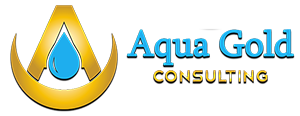Australia’s economic landscape in July 2025 reflects a complex interplay of domestic and international influences. Following years of recovery after the pandemic and amid evolving geopolitical tensions, Australia’s economy has shown both resilience and vulnerability. With inflation moderating, interest rates stabilising, and key sectors displaying mixed performance, understanding the current trends and indicators is essential for businesses, policymakers, and investors. This article examines the most significant economic developments in Australia as of July 2025, focusing on growth trends, inflation, employment, interest rates, housing, trade, and consumer sentiment.
GDP Growth and Economic Performance
Australia’s gross domestic product (GDP) growth has slowed compared to previous quarters, with the economy expanding at an annual rate of approximately 1.8% as of the June quarter. While this represents moderate growth, it is lower than the long-term average of around 2.5%. The primary contributors to economic activity continue to be mining exports, education, tourism, and healthcare.
The slowdown is partly attributed to tighter monetary policy over the past two years, which has reduced household consumption and business investment. In contrast, public infrastructure spending and sustained demand for commodities such as lithium, iron ore, and natural gas have supported national output. The Australian Bureau of Statistics (ABS) reported that private sector investment remains cautious, though public sector investment is holding steady due to government commitments to renewable energy projects and transport infrastructure.
Inflation Trends and Cost of Living
Inflation has been a dominant concern over the past few years, but as of July 2025, headline inflation has eased to 3.2% year-on-year. This marks a notable decline from the peak of over 7% seen in 2022. Core inflation, which excludes volatile items like food and fuel, is tracking slightly below 3%, signaling that monetary policy tightening by the Reserve Bank of Australia (RBA) has had the desired effect.
Despite the slowing inflation, cost of living pressures persist. Essential goods such as groceries, fuel, electricity, and rent remain expensive for many households. Real wage growth is now marginally positive, helping to restore purchasing power, but the pace of improvement varies significantly by industry and region. Government initiatives such as targeted subsidies on energy bills and increased welfare payments have provided some relief, particularly for low-income households.
Interest Rates and Monetary Policy
The Reserve Bank of Australia has kept the official cash rate at 4.35% since early 2025, after a series of hikes that began in 2022 to curb inflation. As inflation approaches the RBA’s target range of 2–3%, discussions have shifted from further increases to potential rate cuts later in the year.
In its July 2025 statement, the RBA maintained a cautious stance, noting that while inflationary pressures have eased, global uncertainties—including supply chain disruptions and commodity price volatility—could still impact the domestic economy. Mortgage holders continue to feel the pressure of higher borrowing costs, which has dampened household spending and slowed the housing market.
Employment and Labour Market Conditions
Australia’s labour market remains strong in mid-2025, with an unemployment rate of 4.1%, slightly higher than last year’s historic lows but still below pre-pandemic averages. Job vacancies have declined from their peak, but demand for skilled workers in healthcare, construction, technology, and renewable energy remains high.
Wage growth has picked up modestly, now averaging around 3.5% annually. However, labour force participation has decreased slightly due to demographic changes, particularly among older workers opting for early retirement. Youth unemployment has also ticked up, prompting calls for more vocational training programs and education reform to align workforce skills with employer needs.
Housing Market Developments
The Australian housing market has entered a period of stabilisation following significant volatility over the past few years. Nationally, home prices have increased by 1.3% over the past quarter, with variations between capital cities and regional areas. Sydney and Melbourne have seen slight upticks in prices, while Brisbane and Perth have recorded stronger growth due to continued population inflows and infrastructure investment.
High interest rates have reduced borrowing capacity for many households, slowing down sales volume. Rental markets remain tight, with vacancy rates below 1% in several cities and annual rent increases exceeding 8% in some locations. This has intensified the debate on housing affordability, with federal and state governments exploring incentives for build-to-rent developments and fast-tracking approvals for new housing projects.
International Trade and Exports
Trade continues to be a critical driver of the Australian economy. In July 2025, exports remain robust, particularly in minerals and energy. The demand for lithium and rare earth minerals from international markets, especially the United States and South Korea, has surged due to the global push toward electric vehicles and clean energy.
China remains Australia’s largest trading partner, although diversification of export markets has progressed, with increased trade volumes to India, Japan, and Vietnam. Agricultural exports have also rebounded following favourable weather conditions and strong global demand. However, rising shipping costs and ongoing supply chain constraints have affected export margins, prompting businesses to explore near-shoring and digital trade solutions.
Consumer Confidence and Business Outlook
Consumer confidence in July 2025 remains fragile but shows signs of recovery. The Westpac-Melbourne Institute Consumer Sentiment Index rose slightly to 86.4, still below the neutral level of 100, indicating continued caution among households. Concerns about mortgage stress, inflation, and job security are gradually being offset by stabilising prices and improved employment prospects.
Business confidence is mixed. Larger firms in mining, finance, and technology sectors report positive outlooks, while small and medium enterprises (SMEs) in retail, hospitality, and construction express uncertainty due to cost pressures and regulatory changes. Access to finance has become more difficult, especially for startups and businesses without strong credit histories.
Government efforts to support SMEs, including tax relief and innovation grants, have provided some buffer. Industry leaders continue to call for consistent policy frameworks and reduced red tape to foster innovation and productivity growth.
Talk to us at Aqua Gold about positioning Your Company in todays Economy
Australia’s economic trends in July 2025 reflect a nation in transition. While the country has weathered global shocks and adjusted to inflationary pressures, challenges remain in the form of high living costs, housing affordability, and labour market adjustments. Stabilising inflation, a strong trade position, and ongoing infrastructure investment provide reasons for cautious optimism. However, the need for targeted reforms and forward-thinking policy remains critical to ensuring sustainable, inclusive growth. Businesses and individuals alike must stay informed and adaptable in the face of a rapidly evolving economic environment.

